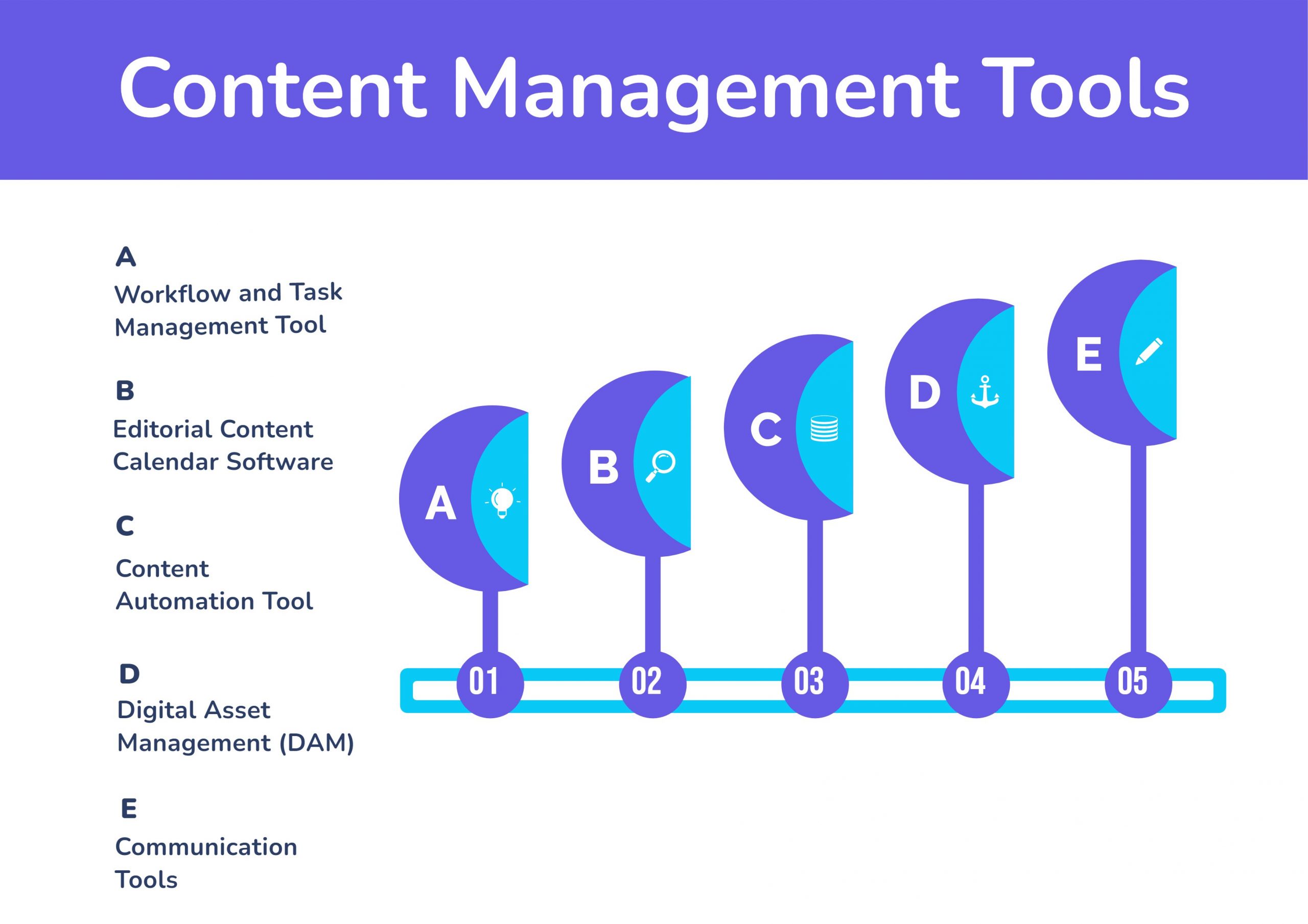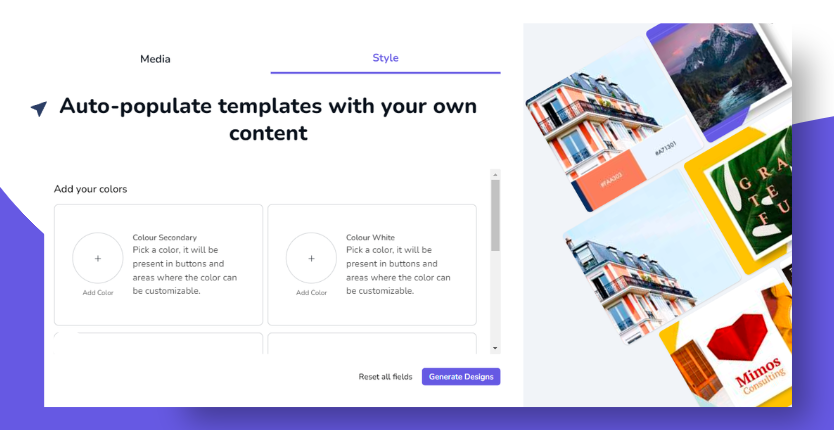How to Create a Content Governance Model for Your Business
If your content team seems overwhelmed with the amount of content they create and manage daily, then it’s time you look into content governance.
Without clear processes around content creation and strategy, your team might soon find themselves drowning in mountains of unfinished content and overall chaos. Creating an effective content governance model is the best way to avoid this.
To help you gain control over your content creation processes, in this guide, we’ll explain how to create a content governance model for your business in 4 simple steps.
4 Steps to Create an Effective Content Governance Model
Discover Corporate Marketing Hub
Step 1: Establish Roles & Responsibilities
The first step in creating a content governance model is identifying who will be responsible for each stage. For example, suppose you have multiple teams contributing content. In that case, it might make sense for one person to be responsible for reviewing all content before it’s published and another one to be in charge of the editorial calendar.
Content team members typically include those who manage all content-related activities within the team, those who plan out the content strategy (content manager, content team leader, content strategists), and those who create the content (writers, editors, creators, and designers).
Additionally, the content team should have subject matter experts, such as a product manager, a developer, or a sales specialist, who can provide specific information to help the content strategist and content creators make better content. To make this process smoother, content team members and other specialists can use the SharePoint calendar to discuss building an effective content marketing strategy.
Ensure everyone involved in creating and distributing content clearly understands their role within the organization. This will help you establish clear processes for producing, approving, and publishing content.
Step 2: Design Content Workflows
Designing content workflows is the key to building an efficient content governance model. Workflows should cover everything from when specific types of content should be created, how often they should be updated, who will approve them before they’re published, and where they’ll be stored after publication.
A content workflow typically includes four stages:
- Strategy: This is where you define your goals and objectives for creating and publishing content.
- Creation: This is when your content team creates different pieces of content that fit in with your strategy. During this phase, it’s important to include deadlines in your plan so that everyone involved knows what is expected from them and when they need to deliver their part of the project.
- Revision: Once the content is created, it’s time to optimize it, edit it, and make sure that it follows your brand guidelines and editorial standards.
- Publication: This is where the content will be distributed across relevant marketing channels after being revised.
Step 3: Put Brand Guidelines & Editorial Standards in Place
Your business may have multiple teams working on different types of content. If you want to ensure that all the members of your content team are producing content up to the company’s expectations, you must put brand guidelines and editorial standards in place.
Brand guidelines ensure that all the content consistently reflects your brand voice across all marketing channels, while editorial standards set the quality bar for your team to uphold.
Setting brand guidelines and editorial standards is essential to ensure that your content is always top-notch. This will also improve customer experience by ensuring that everything your organization says about itself is accurate and always in line with its brand voice. After all, brand consistency can help you boost sales by as much as 23%!
Step 4: Create Processes to Ensure Compliance
Once you’ve put together your guidelines and standards, you must ensure that all employees involved in creating and updating content follow them.
You can do this through regular audits, such as a weekly meeting for content review, where you and your team review each piece of content being published that week and assess whether it complies with the guidelines.
Or, it can be done automatically with a tool such as Desygner’s Brand Guidelines Enforcer, which can help you create a consistent brand experience throughout all of your brand assets and content.
5 Essential Tools for Content Governance
Without the right tools to carry out all the tasks and processes established in your content governance model, your content team may still struggle to deliver the right type of content at the right time throughout all marketing channels and touchpoints.
So, here are five essential tools to help you streamline your content governance processes.

Discover Content Management Tools
1. Workflow & Task Management Tool
A workflow and task management tool helps you manage tasks and assign them to team members in a centralized place. This makes it easier for everyone to see what needs to be done and ensures everyone is on the right track, which is key to an effective content governance model.
This tool helps your team stay organized by setting up different workflows for each part of the content creation process – from ideation to publishing. You can assign tasks for each step, add due dates, and easily keep track of progress. Some tools also allow for workflow automation. For example, once someone has marked their task as complete, it automatically moves to the next step.
A workflow management tool also helps maintain consistency throughout all stages by ensuring everyone follows the same process when working on a project — which is especially important if multiple departments are involved in creating content.
2. Content Automation Tool
A content automation tool is the foundation of any effective content governance strategy. It helps you automate repetitive tasks, such as publishing new blog posts or managing social media in one place, and streamline processes to focus on high-level decisions instead of low-level implementation details.
Automating repetitive tasks can save you and your content team time while improving consistency in publishing content.
Another thing that’s worth automating to create a more effective content creation process is the design. Designing graphics can take a lot of time, and not all organizations can bring a dedicated graphic designer to their content team full-time.
Design automation tools, such as Desygner, allow you to leverage your team’s collective expertise and create reusable marketing material templates that are easily updated and shared. In other words, Desygner can help your team avoid many hours spent designing graphics.
In addition, Desygner’s interface is super friendly for non-designers. This means that anyone on your team can create graphics, so you won’t have to hire another employee. If that sounds interesting, than our online InDesign alternative will surely pique your interest as well which ensures brand consistency and is easy to use.

3. Editorial Content Calendar Software
An editorial calendar helps everyone on your team coordinate their efforts around creating new content. It keeps everyone on the same page, so there are no surprises when it comes to publishing.
With an editorial calendar, everyone knows when each piece of content is due and where it fits into the overall strategy. It’s a crucial part of any content governance model because it helps you set deadlines, coordinate with other teams, and plan for the future.
Many editorial calendars offer various features, such as Monday.com, CoSchedule, Trello, AirTable, or Asana. Each provides a different layout and focus, so choosing the right one for your business will depend on your specific needs and preferences.
4. Digital Asset Management (DAM)
A DAM lets you store and manage all of your web assets — images, videos, audio files, etc. — in one place, so they’re easy to find when needed. Using digital asset management software makes it easier to track every brand asset you may need when creating different pieces of content.
In addition, it also helps you see who owns each asset, so there’s less risk of losing something important when someone leaves the company or changes roles within it.
It’s also helpful in tracking changes made to each asset across multiple channels over time, which can help identify inconsistencies between versions and help keep track of revisions.

5. Communication Tools
Content governance isn’t just about creating, managing, and publishing content. It’s also about maintaining effective communication within your company.
Unified communication tools such as Slack provide an easy way to collaborate with teams across departments and even across borders, making it easier to distribute information quickly while keeping everyone up to date on current projects and initiatives within the organization.
Final Thoughts
Creating an effective governance model can be a struggle. However, it’s an essential building block for any successful content marketing strategy.
It helps align teams around common content goals, streamline content creation processes, and enable collaboration across departments.
In short, a content governance model helps you streamline your content creation processes, from creation to publishing and storing. And if you’re looking for the right tools to help you achieve that, you should add Desygner to your list.






